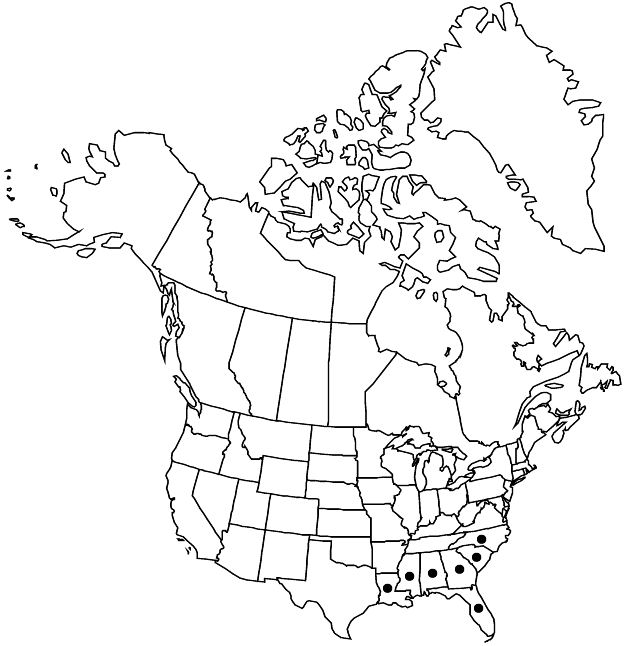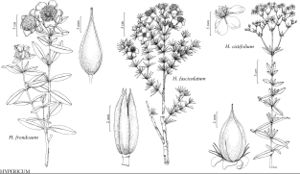Difference between revisions of "Hypericum fasciculatum"
in J. Lamarck et al., Encycl. 4: 160. 1797.
FNA>Volume Importer |
FNA>Volume Importer |
(No difference)
| |
Revision as of 20:14, 24 September 2019
Shrubs, erect, much-branched distally, bushy, not treelike, usually forming mounds, to 15(–30) dm, bark thick, smooth, thin-corky and spongy, exfoliating in thin, papery sheets or plates. Stems: internodes 6-lined at first, soon 2-winged, then terete, not glaucous. Leaf blades linear-subulate, 8–20 × 0.7–1 mm, not glaucous, base articulated, parallel, margins revolute, apex sometimes slightly broadened, midrib unbranched. Inflorescences rounded-pyramidal to corymbiform, sometimes intercalary as result of resumed vegetative growth, (3–)7–32-flowered, sometimes with single flowers or 3–5-flowered dichasia from to 3 proximal nodes. Flowers 13–16 mm diam.; sepals deciduous, not enclosing capsule, 5, linear-subulate, unequal, (3–)4.5–8(–10) × 0.5 mm, not glaucous; petals 5, bright yellow, obovate-spatulate, 6–9 mm; stamens deciduous, 70–100; ovary 3-merous; styles 2.5–4 mm. Capsules ± narrowly ovoid-conic to ovoid-ellipsoid, 5.5 × 2.5–3 mm. Seeds not carinate, 0.4 mm; testa finely foveolate-reticulate. 2n = 18.
Phenology: Flowering spring–fall (Apr–Nov).
Habitat: Ponds and lake margins, marshes, ditches, coastal plain
Elevation: 0–500 m
Distribution

Ala., Fla., Ga., La., Miss., N.C., S.C.
Discussion
The thick, often spongy, bark, relatively long axillary leaf clusters, paired leaf grooves flanking the midrib abaxially, broader inflorescence, and broader capsules distinguish Hypericum fasciculatum (and H. chapmanii) from H. nitidum and its relatives.
Hypericum aspalathoides Willdenow is an illegitimate name for H. fasciculatum.
Selected References
None.
